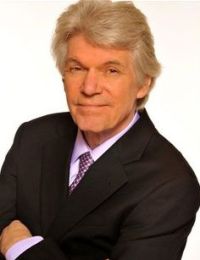Foreward from Robert Whiting
Japan and the United States have a history that spans more than 150 years. For most of that time, it has been the common sport of baseball that has played a key role in forging relations between the two countries. Introduced by an American professor teaching in Tokyo in Early Meiji, yakyu, or field ball, as it was also known, became the national sport of Japan in the late nineteenth century when a squad of Japanese schoolboys from the prestigious First Higher School of Tokyo prep school defeated a team of Americans playing for the Yokohama Country and Athletic Club of Japan in the first formal series of games between the two nations. What followed was a century and a half of transpacific baseball: interscholastic tours, collegiate tours, and major league tours, as well as junkets by assorted soft ball, semi-pro, and women’s baseball clubs, that helped build lasting friendships between Japanese and Americans.
A visit by Babe Ruth in 1934 drew a million fans to the Ginza and temporarily defused escalating tensions, while a visit by the San Francisco Seals in 1949 rebuilt good will between the two wartime enemies. Joe DiMaggio and Marilyn Monroe honeymooned in Japan and it became the year’s biggest news. It was followed quickly by the arrival of Japanese American Wally Yonamine’s flair and winner-take-all style which revolutionized the ritualized stoicism of samurai sport. Mickey Mantle, Duke Snider, and Willie Mays all hit post-season round trippers on visits to Japan. Masanori Murakami became the first Japanese to play big league baseball in 1964. Hank Aaron and Sadaharu Oh had a home-run contest in Tokyo in 1974.
In 1995, Hideo Nomo’s success defused trade conflicts and permanently opened the MLB door for fellow stars Hideki Matsui, Yu Darvish, and a host of others, including Ichiro Suzuki, who became a cultural icon in America and will become the first Japanese to enter the Cooperstown Hall of Fame – if and when he ever retires. Tens of thousands of Japanese flew to the United States to watch these stars play, while in Japan, MLB satellite TV ratings shot through the roof. As you will see from the photographs in Pacific Pitch, the grand old game of baseball has been the connective tissue that has bound the United States and Japan together for nearly a century and a half. It has been a useful prism through which to view our two countries’ relations.
Robert Whiting
Author, You Gotta Have Wa, The Meaning of Ichiro, and The Chrysanthemum and the Bat
日本とアメリカには150年以上にわたる歴史があります。その大半の期間において、一般的なスポーツである野球が二国間の関係を築くのに重要な役割を果たしてきました。明治初期に東京で教えていたアメリカ人の教授が紹介した野球(またはフィールド・ボール)は、19世紀後半、日米間の初の公式シリーズ戦で、東京の有名な進学校の第一高等学校の生徒たちが、横浜カントリー・アンド・アスレチック・クラブのアメリカ人チームを破って以来、日本の国民的スポーツとなりました。その後一世紀半にわたり、太平洋を越えて野球の交流が続きました。学校対抗、大学対抗、およびメジャーリーグの遠征ツアーなどが実施されました。また、ソフトボールやセミプロ、女子野球クラブなどによる訪問旅行も行われ、日米間の長年にわたる友情を育むのに貢献しました。
1934年にベイブ・ルースが来日したときは、100万人ものファンが銀座に集まり、日米の間で高まっていた緊張が、一時的に緩和されました。1949年のサンフランシスコ・シールズの来日は、戦争で敵対した二国間の友好関係を再構築しました。ジョー・ディマジオとマリリン・モンローは、ハネムーンで日本を訪れ、その年の最大のニュースになりました。その後間もなく、日系アメリカ人のウォーリー・ヨナミネ(与那嶺)が来日し、その才能と、「勝者が全てを手に入れる」というスタイルが、儀式的でストイックなサムライのスポーツに変革をもたらしました。ミッキー・マントル、デューク・スナイダー、ウィリー・メイズがシーズン後に日本を訪問しました。1964年、村上雅則が日本人初のメジャーリーグ・プレイヤーとなりました。1974年には、東京でハンク・アーロンと王貞治がホームラン競争を行いました。
1995年、野茂英雄の活躍が貿易摩擦を緩和し、松井秀喜やダルビッシュ有をはじめとする多くの日本人選手にMLBへの道が恒久的に開かれました。この中には鈴木イチローもいました。イチローは今やアメリカの文化的象徴で、もし引退したら、クーパーズタウンにあるアメリカ野球殿堂に入る最初の日本人になるでしょう。何十万人もの日本人がこれらのスター選手の活躍を見るためにアメリカに飛び、日本ではMLBの衛星テレビ番組の視聴率が跳ね上がりました。野球が日米をほぼ一世紀半にわたって結びつけてきたことが、『パシフィックピッチ』の写真をご覧頂くと分かると思います。野球は日米関係を観察するのにちょうど良いプリズムなのです。
ロバート・ホワイティング
『和をもって日本となす』、『イチロー革命』、『菊とバット』著者

Author

